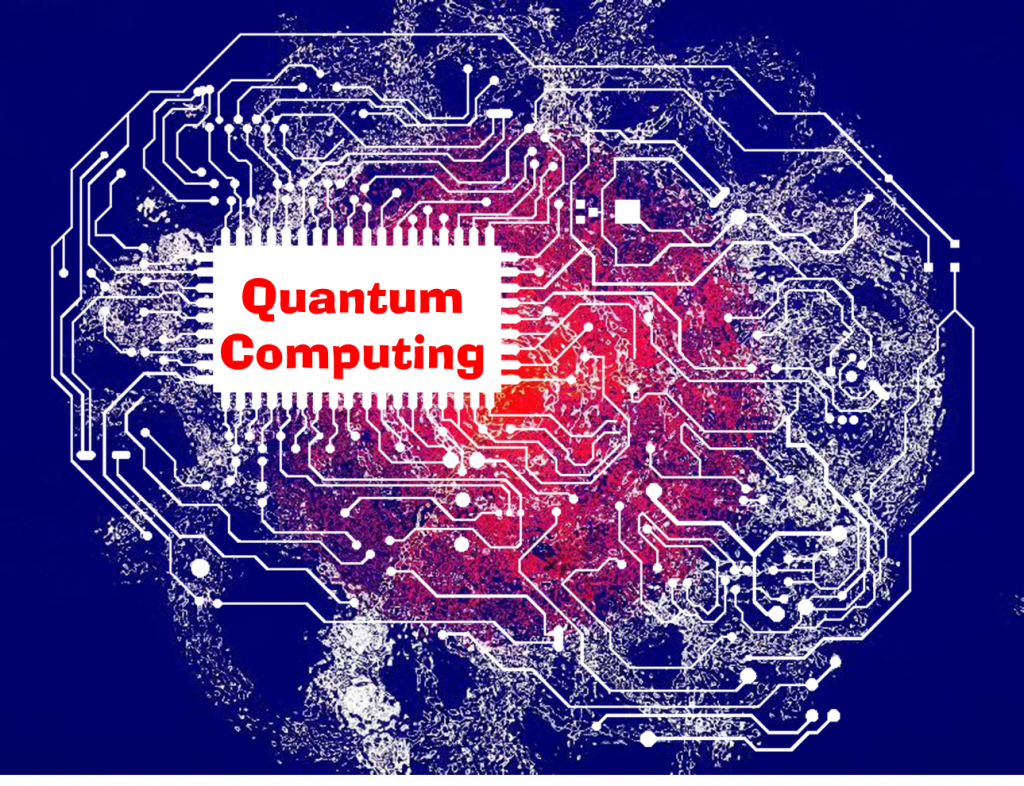“The third age of machines is near,” writes Bruno Teboul (@Brunoteboul), governance member at the Ecole Polytechnique. “Quantum and cognitive computers will perform Big Data processing in the cloud. This age follows that of data science, a multidisciplinary science for collecting, processing and enhancing Big Data.”[1] The age of big data and cloud computing in which we now find ourselves is certainly not over. In fact, most analysts agree that the current era lies somewhere between its infancy and puberty — but it’s maturing rapidly. That rapid maturation has sparked a frenzy in the area of quantum computing as it has become clear that tremendous insights and new relationships can be discovered by analyzing large amounts of data. Still, there remain some calculations that are so large even the best of today’s computers (even running in parallel) find these calculations intractable. Elizabeth Gibney (@LizzieGibney) explains that some of these calculations are so large “that ordinary computers could not finish [them] in the lifetime of the Universe.”[2] For that reason, Teboul notes that today’s computing systems are unsustainable. He explains:
“Data science is like petrochemicals for the digital world, refining crude Big Data into useful, predictive information. Thanks to this, we know in advance the product a customer will choose. To achieve such a feat, data science uses algorithms, and quite extraordinary machine learning can improve these algorithms over time. These algorithms need immense computing power, and giants such as Google, Amazon and Netflix have developed parallel computing systems. The problem is, current equipment is not ideal — a machine is sequential and does not know how to comprehend thousands of pieces of information at once. We want some kind of super human brain, which has an average of 100 billion neurons with 10,000 connections each. We can wait as microprocessors improve — after all, Moore’s Law states that they double their capacity regularly through miniaturisation. But we are still far from electronic transistors being as small as a few atoms. The solution that researchers are considering is to base the treatment of information on a quantum state of small electronic components. According to physicists, in a quantum system a particle can be in two places at one time and an action on one particle can automatically alter another. In the present state of research, quantum computers have a fault: any unfortunate interaction with their environment changes their super processing power into what is effectively a game of heads or tails.”
As Teboul explained, the most important reason that researchers want to build a quantum computer is so that they can change the analytic paradigm from being sequential to simultaneous. That shift in paradigm can only occur at the quantum level. The problem is that a universal quantum computer remains in the area of science fiction. As Gibney reports, “Sceptics often compare quantum computing to fusion energy: it is a revolutionary technology that always seems to be decades away.” Like traditional computers, quantum computers need both hardware and software; but the hardware and software are different than that used in traditional computing. Because they work at the sub-atomic level, just a little interference can create havoc. And the particles that need to be manipulated during analysis (so-called qubits) are so finicky that getting them to remain in the necessary state has proved challenging. The editorial staff at Phys.org explains, “Quantum computers promise enormous power, but are notoriously tricky to build. To encode information in qubits, the fundamental units of a quantum computer, the bits must be held in a precarious position called a superposition of states. In this fragile condition the bits exist in all of their possible configurations at the same time, meaning they can perform multiple parallel calculations. The tendency of qubits to lose their superposition state too quickly, a phenomenon known as decoherence, is a major obstacle to the further development of quantum computers and any device dependent on superpositions.”[3] As a result, quantum computers require expensive shielding and operate at temperatures near absolute zero making the whole venture very expensive. Nevertheless, progress continues to be made.
For example, Lisa Zyga reports, “Topological quantum computing (TQC) is a newer type of quantum computing that uses ‘braids’ of particle tracks, rather than actual particles such as ions and electrons, as the qubits to implement computations. Using braids has one important advantage: it makes TQCs practically immune to the small perturbations in the environment that cause decoherence in particle-based qubits and often lead to high error rates.”[4] Errors can be a real problem when doing any calculation and, since qubits are highly error prone, error rates are a real challenge. Recently, however, IBM has claimed a breakthrough in “error-correction techniques that could maintain the integrity of computations performed using qubits.”[5]
Like any other computer system, you want to be able to store things on a quantum computer. Progress is also being made on that front. Phil Dooley (@DrPhilDooley) reports, “Physicists developing a prototype quantum hard drive have improved storage time by a factor of more than 100. The team’s record storage time of six hours is a major step towards a secure worldwide data encryption network based on quantum information, which could be used for banking transactions and personal emails.”[6] And a company called Cambridge Quantum Computing Limited (CQCL) claims to have developed an operating system for quantum computers.[7] To overcome some of the instability associated with quantum computers, researchers from the Joint Quantum Institute at the University of Maryland recommend using “a hybrid quantum processor that uses trapped atoms as the memory and superconducting qubits as the processor, as atoms demonstrate relatively long superposition survival times and superconducting qubits perform operations quickly.”[8]
Other breakthroughs that have recently come to light include development of a photonic router by researchers at the Weizmann Institute of Science. The router is “capable of guiding single photons” and “could overcome challenges associated with building quantum computers.”[9] And James Maynard reports that researchers from the University of Utah believe they have developed a new way to operate quantum computers without high temperatures becoming an issue.[10] Their approach involves a silicon semiconductor “covered in a thin layer of metal, in a form of ‘topological insulator.’ This hybrid sheet is able to conduct electricity along its outer shell, while the inside retains properties as an insulator.”
All of these breakthroughs, along with others that I have discussed in previous articles, are exciting researchers because they believe they are nearing the point where research will allow them to scale up from small experiments to a real system. If that happens, Prophet notes that it will have far-reaching impacts. Quantum computing, he writes, will have “significant applications for the global economy, including financial markets, insurance, intelligence, cyber-security, internet, medicinal and pharmaceutical research, defense, energy, database management, logistics and communications.”
Footnotes
[1] Bruno Teboul, “Tomorrow will see quantum computers for all the world’s needs,” Financial Times, 1 June 2015.
[2] Elizabeth Gibney, “Quest for Quantum Computers Heats Up,” Scientific American, 4 December 2014.
[3] “Ultra-thin wires for quantum computing,” Phys.org, 17 June 2014.
[4] Lisa Zyga, “‘Fibonacci quasiparticle’ could form basis of future quantum computers,” Phys.org, 15 December 2014.
[5] Agam Shah (@agamsh), “IBM claims advance in effort to build reliable, large-scale quantum computer,” IT World, 29 April 2015.
[6] Phil Dooley, “Quantum hard drive breakthrough,” R&D Magazine, 8 January 2015.
[7] Graham Prophet, “Quantum Computing Gets an OS,” EE Times, 6 May 2015.
[8] Op. cit., “Ultra-thin wires for quantum computing,” Phys.org, 17 June 2014.
[9] “Photonic Router Aids Quantum Computing,” Photonics.com, 15 July 2014.
[10] James Maynard, “Superfast, quantum computers that don’t overheat? University of Utah engineers make it possible,” Tech Times, 25 September 2014.





